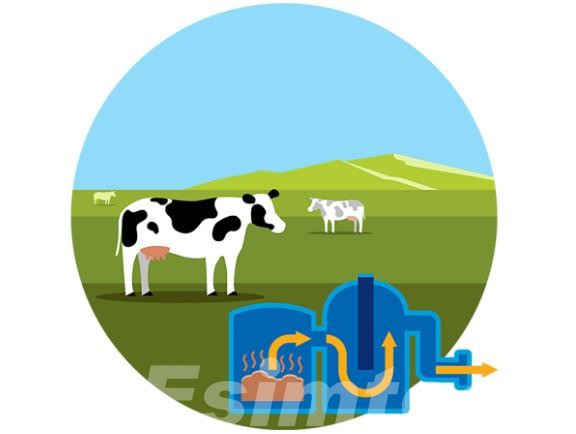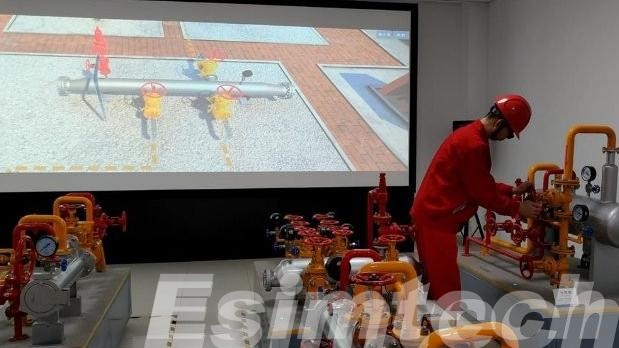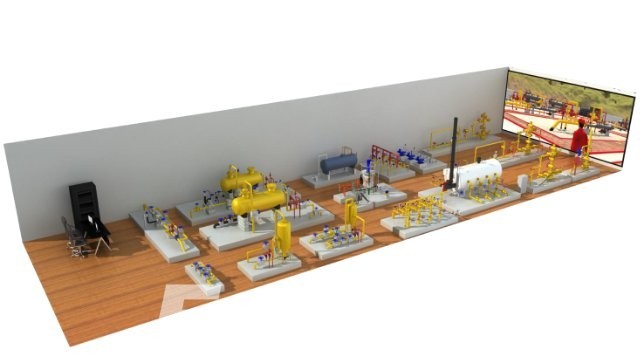Technology Innovation in Gas Production
In recent years, technological innovation in oil and gas production has significantly transformed the industry, enhancing efficiency, safety, and environmental sustainability. This article explores the key areas of technological innovation in gas production, the benefits these advancements bring, and what the future holds for the industry.
Key Areas of Technological Innovation in Gas Production
The natural gas industry is experiencing a renaissance fueled by a surge in technological advancements. Let’s delve deeper into some key areas driving this transformation:
Digital Oilfield

This isn’t just a fancy term. It’s a connected ecosystem built on a foundation of sensor networks, the Internet of Things (IoT), and big data analytics. Imagine a network of intelligent sensors embedded throughout wells and pipelines, constantly feeding real-time data on pressure, temperature, and flow rates. This data gets crunched by powerful analytics tools, providing producers with unprecedented insights into well performance. These insights allow for proactive maintenance, preventing costly downtime and optimizing production.
Advanced Drilling Techniques
Gone are the days of simply drilling straight down. Horizontal drilling allows producers to access vast reserves trapped in shale formations by following the rock layers for extended distances. Hydraulic fracturing, also known as fracking, creates fissures in these formations, allowing the trapped gas to flow more freely. However, advancements are being made to optimize these techniques. Multi-stage fracking precisely targets specific zones within the formation, maximizing gas recovery while minimizing environmental impact. Additionally, researchers are developing new, cleaner fracturing fluids to further reduce the environmental footprint.
Artificial Intelligence (AI) and Machine Learning (ML)
The industry is harnessing the power of AI and machine learning in revolutionary ways. Imagine vast datasets encompassing everything from reservoir characteristics to historical well performance data. AI algorithms can analyze these complex datasets, identifying patterns and predicting potential issues. This can be used to predict equipment failures before they happen, allowing for preventative maintenance and avoiding costly disruptions. Further, AI can optimize drilling paths, maximizing gas recovery from each well. The ability to analyze vast amounts of data in real-time allows for highly dynamic decision-making, leading to significant efficiency gains.
Robotics and Automation
Robots are no longer confined to science fiction. Remotely operated vehicles (ROVs) are venturing into deepwater environments, performing inspections and maintenance tasks on subsea infrastructure. This not only reduces the need for human divers in hazardous conditions but also allows for more precise and efficient operations. On land, autonomous robots are being deployed for pipeline inspections and leak detection. These advancements not only enhance safety but also free up human workers for more strategic tasks.
Renewable Natural Gas (RNG)

This development focuses on capturing methane, a potent greenhouse gas, from landfills and agricultural waste. Through a series of technological processes, this captured methane is converted into clean-burning biogas. This RNG can then be injected into existing natural gas pipelines, offering a sustainable and renewable alternative to traditional sources. The development of RNG technology holds immense potential for reducing the environmental impact of the natural gas industry.
Gas Production Simulation Technology
Gas production simulation technology is a pivotal innovation that has transformed the way the industry approaches planning, decision-making, and risk management. By leveraging advanced modeling tools, operators can replicate and analyze various operational scenarios, providing invaluable insights that drive efficiency and safety. Here’s a closer look at the key benefits and applications of gas production simulation technology:

What can Gas Production Simulators Do?
Imagine having a virtual testbed where you can experiment with different production strategies without ever setting foot on the actual site. This is precisely what gas production simulators offer. Here’s a deeper dive into their capabilities:
- Reservoir Modeling: Simulators meticulously portray the intricacies of underground formations. They account for factors like porosity (the amount of space for fluids), permeability (the ease with which fluids can flow), and fluid saturation (the percentage of gas, oil, and water). This allows engineers to visualize and study how the reservoir behaves under various production scenarios.
- Fluid Flow Simulation: Simulators employ sophisticated fluid dynamics principles to recreate the movement of gas within the reservoir and throughout the entire production system. They consider factors like pressure differentials, gas properties, and wellbore behavior. This enables engineers to predict production rates, optimize well placement, and identify potential bottlenecks in the system.
- Wellbore and Surface Equipment Modeling: These programs don’t stop at the reservoir. They also model wellbores, including the completion techniques used and the various components involved. Surface facilities like pipelines and processing plants can also be factored in. This allows engineers to evaluate different well designs, equipment combinations, and production techniques to see how they impact overall efficiency.
Benefits of Gas Production Simulation
The advantages of utilizing gas production simulation technology are numerous:
- Optimized Well Placement: By simulating different drilling scenarios, engineers can identify the most effective locations for wells, maximizing gas recovery from the reservoir.
- Improved Production Strategies: Simulators can help predict the impact of various production techniques, such as injection of water or gas, allowing companies to choose the most efficient methods for extracting the resource.
- Reduced Risk of Drilling Problems: Simulations can identify potential issues like pressure imbalances or formation instability before drilling even begins, leading to safer and more cost-effective operations.
- Enhanced Field Management: By providing a real-time picture of reservoir behavior, simulators enable engineers to make data-driven decisions to optimize production throughout the lifecycle of the gas field.

Benefits of Technological Innovation in Gas Production
Technological innovation is breathing new life into gas production, offering a multitude of benefits that extend far beyond just the bottom line. Here’s a closer look at the positive impacts:
- Increased Efficiency and Production: Gone are the days of relying solely on intuition and experience. Real-time data from sensors and advanced analytics allow for precise well optimization. AI algorithms can analyze vast datasets to predict equipment failures before they occur, preventing costly downtime. Additionally, advanced drilling techniques like horizontal drilling and hydraulic fracturing unlock previously unreachable reserves, significantly boosting production yields.
- Enhanced Safety: Human error is a significant factor in accidents within the gas production industry. Robotics and automation are changing the game. Remotely operated vehicles (ROVs) and drones can perform dangerous tasks like pipeline inspection and well maintenance in hazardous environments. This not only reduces the risk of accidents but also frees up human workers for more strategic roles.
- Environmental Benefits: The industry is facing increasing scrutiny for its environmental impact, particularly methane emissions. Technological advancements are tackling this head-on. Advanced leak detection systems identify and pinpoint methane leaks in pipelines and infrastructure, allowing for swift repairs and emission mitigation. Additionally, technologies like carbon capture and storage (CCS) are being explored to capture carbon emissions from production, significantly reducing the industry’s overall environmental footprint.
- Cost Reduction: The combined effect of increased efficiency, reduced downtime, and improved well performance translates to significant cost savings for producers. Optimizing operations reduces energy consumption and maintenance expenses. Additionally, AI-powered predictive maintenance can prevent costly equipment failures, further streamlining production and minimizing financial losses.
- Sustainability and a Bridge to the Future: Technological innovation isn’t just about maximizing gas production in the short term. It’s also about ensuring the industry’s long-term viability in a world increasingly focused on clean energy. Technologies like Renewable Natural Gas (RNG) are paving the way for a more sustainable future. By capturing methane from landfills and agricultural waste and converting it into biogas, RNG offers a clean and renewable alternative to traditional natural gas.
In conclusion, technological innovation is not just transforming gas production; it’s ensuring its responsible and sustainable future. By embracing these advancements, the industry can continue to meet energy demands while minimizing its environmental impact and prioritizing safety for its workers.
Conclusion
Technological innovation is transforming gas production, making it more efficient, sustainable, and safer. As these advancements continue, the industry will play a crucial role in meeting the world’s energy demands while minimizing environmental impact.
